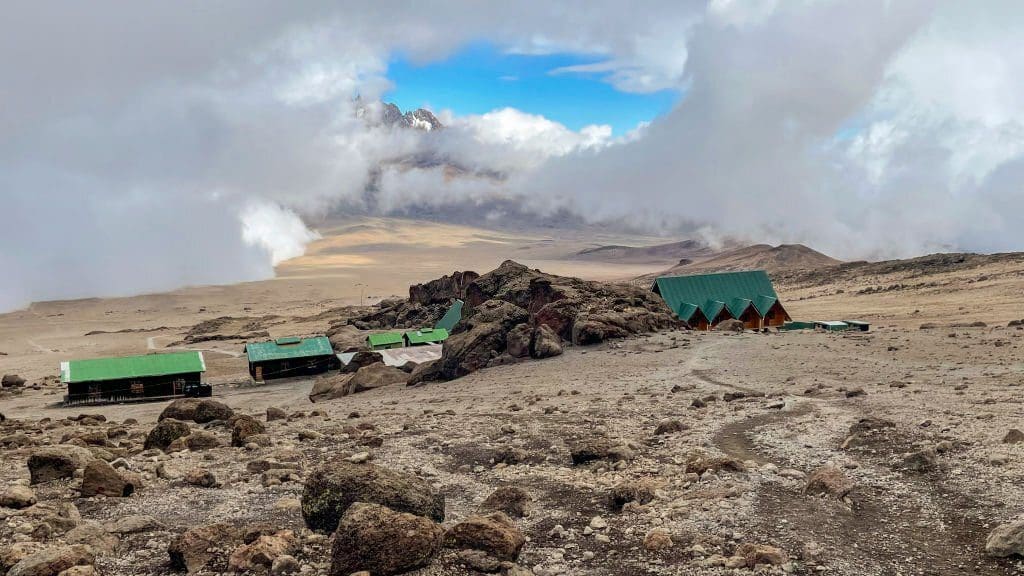Introduction
Kilimanjaro weather Introduction
Kilimanjaro weather is important to understand when you planning to conquer the majestic Mount Kilimanjaro? If so, then understanding the unique and ever-changing Kilimanjaro weather conditions on this awe-inspiring mountain is crucial for a successful climb. Welcome to the ultimate guide on Kilimanjaro weather, where we will equip you with all the essential information you need before embarking on this epic adventure. From the scorching heat of the lowlands to the freezing temperatures at the summit, Mount Kilimanjaro offers a diverse range of climatic zones that can pose challenges to even the most seasoned climbers. In this comprehensive guide, we will delve into the different seasons, microclimates, and weather patterns you can expect during your ascent, providing you with invaluable insights and tips to help you plan your journey effectively. Whether you’re a thrill-seeking adventurer or a nature enthusiast, this guide will ensure that you are well-prepared to tackle Kilimanjaro’s weather conditions, allowing you to fully immerse yourself in the breathtaking beauty of this iconic African landmark. Get ready to embark on the journey of a lifetime as we unravel the mysteries of Kilimanjaro weather!
Understanding the Importance of Kilimanjaro Weather
Mount Kilimanjaro, located in Tanzania, is the tallest freestanding mountain in the world, standing at a staggering 5,895 meters (19,341 feet) above sea level. Its height alone presents a challenge, but it’s the weather on Kilimanjaro that truly tests climbers. The weather on the mountain is highly unpredictable and can change rapidly, making it essential for climbers to be well-prepared.
The weather conditions on Mount Kilimanjaro are influenced by various factors, including altitude, geographical location, and the mountain’s proximity to the equator. These factors create a unique blend of climatic zones, ranging from hot and humid to cold. Understanding the different weather patterns is essential for determining the best time to climb and ensuring your safety throughout the journey.
Factors That Influence Kilimanjaro Weather
Altitude: As you ascend Mount Kilimanjaro, the temperature drops significantly due to a decrease in air pressure. The higher you climb, the colder it gets. This dramatic temperature change is one of the most challenging aspects of climbing Kilimanjaro.
Geographical location: Kilimanjaro is situated near the equator, which means it doesn’t experience the typical four seasons like other parts of the world. Instead, it has two major seasons – the dry season and the wet season. The geographical location also influences the overall climate and weather patterns on the mountain.
Microclimates: Mount Kilimanjaro features five distinct climatic zones, each with its unique weather conditions. These microclimates include the cultivated zone, the rainforest zone, the heather-moorland zone, the alpine desert zone, and the summit zone. Each zone presents its challenges and requires different preparations.
Seasons: Kilimanjaro experiences two main seasons – the dry season and the wet season. The dry season typically occurs from late June to October and January to March, while the wet season occurs from November to December and April to May. During the wet season, rainfall is more frequent, and there is a higher chance of encountering precipitation on the mountain.
Trade Winds: Kilimanjaro’s weather is influenced by the northeast and southeast trade winds. These winds blow across the Indian Ocean and affect the mountain’s weather patterns. They can bring moisture and precipitation to the mountain, especially during the wet season.
Orographic Lift: Orographic lift refers to the process by which air is forced to rise as it encounters a mountain range. Kilimanjaro’s towering presence can result in the orographic lift, causing the air to rise, cool, and potentially condense into clouds, leading to precipitation on the windward side of the mountain.

Kilimanjaro Weather Patterns Throughout the Year
Kilimanjaro experiences two main seasons – the dry season and the wet season. The dry season, also known as the high season for climbing, occurs from June to October and January to February. During this time, the weather on the mountain is generally drier and more stable, making it ideal for climbing. The wet season, on the other hand, falls between March and May, and November and December. This season is characterized by heavy rainfall, making climbing more challenging and less popular.
Within these seasons, Kilimanjaro’s weather patterns can still vary. It’s important to note that even during the dry season, rain and snowfall can occur at higher altitudes. The weather on Kilimanjaro is highly unpredictable, and climbers should be prepared for sudden changes in conditions. Table gives the weather forecast for mount Kilimanjaro
The Best Time to Climb Kilimanjaro Based on Weather Conditions
The best time to climb Kilimanjaro largely depends on your personal preferences and tolerance for different weather conditions. The dry season is considered the most favorable for climbing due to its relatively stable weather. However, it’s worth noting that the dry season also attracts more climbers, resulting in busier routes and potentially crowded campsites.
If you prefer a quieter climb and are prepared to face more challenging weather conditions, the wet season might be an option. Despite the increased rainfall, the mountain is less crowded during this time, allowing for a more secluded and immersive experience. However, it’s important to be prepared for slippery trails, muddy terrain, and the possibility of heavy downpours.
Preparing for Kilimanjaro Weather: Essential Clothing and Gear
When it comes to climbing Kilimanjaro, proper clothing and gear are essential for your safety and comfort. Layering is key to adapting to the changing weather conditions as you ascend the mountain. Here are some essential items to pack for your Kilimanjaro climb:
1. Base layers: Lightweight and moisture-wicking clothing that helps regulate body temperature.
2. Insulating layers: Thick, warm clothing to keep you cozy during cold nights and high altitudes.
3. Outer shell: A waterproof and windproof jacket to protect you from rain, snow, and strong winds.
4. Footwear: Sturdy hiking boots with good ankle support and waterproof capabilities.
5. Accessories: Hats, gloves, scarves, and sunglasses to protect against sunburn, windburn, and frostbite.
It’s crucial to invest in high-quality gear that can withstand the extreme weather conditions on Kilimanjaro. Make sure to test your clothing and gear before your climb to ensure they fit comfortably and provide adequate protection.
Tips for Managing Kilimanjaro Weather Challenges
Climbing Kilimanjaro is a physically and mentally demanding endeavor, especially when dealing with unpredictable weather conditions. Here are some tips to help you manage the challenges posed by Kilimanjaro’s weather:
1. Stay hydrated: Proper hydration is crucial at high altitudes to prevent altitude sickness and maintain your overall well-being. Drink plenty of water throughout your climb, even if you don’t feel thirsty.
2. Pace yourself: Climbing Kilimanjaro is not a race. Take your time and listen to your body. Adjust your pace based on the weather conditions, your energy levels, and any symptoms of altitude sickness.
3. Protect yourself from the sun: At higher altitudes, the sun’s rays are stronger, and the risk of sunburn is higher. Apply sunscreen regularly, wear a hat, and use sunglasses to protect your skin and eyes.
4. Be prepared for cold temperatures: As you reach higher altitudes, the temperature drops significantly. Pack warm clothing and ensure you have enough layers to keep you warm during cold nights and early morning starts.
5. Watch out for signs of altitude sickness: Altitude sickness can be life-threatening if not addressed promptly. Familiarize yourself with the symptoms and make sure to communicate any discomfort or unusual symptoms to your guides.
How to Stay Safe in Extreme Weather Conditions on Kilimanjaro
While climbing Kilimanjaro, you may encounter extreme weather conditions, including heavy rain, snow, high winds, and freezing temperatures. To stay safe in these conditions, it’s crucial to follow these safety guidelines:
1. Follow the advice of your guides: Your guides have extensive experience navigating Kilimanjaro’s weather. Listen to their instructions, heed their warnings, and trust their judgment.
2. Monitor weather forecasts: Before and during your climb, pay attention to weather forecasts. This will help you anticipate any adverse weather conditions and plan accordingly.
3. Stay together: Climbing in groups is safer than going solo, especially in challenging weather conditions. Stick with your climbing partners and ensure that no one gets left behind.
4. Be flexible with your itinerary: Kilimanjaro’s weather is unpredictable, and it’s important to be flexible with your itinerary. If weather conditions worsen, be prepared to adjust your plans or even turn back if necessary.
The Role of Guides and Porters in Navigating Kilimanjaro Weather
Guides and porters play a crucial role in ensuring your safety and success on Mount Kilimanjaro, especially when it comes to weather conditions. They are familiar with the mountain’s microclimates, weather patterns, and potential hazards. They also have the necessary equipment and experience to navigate challenging weather conditions.
When choosing a climbing company, opt for those that prioritize the welfare of their guides and porters. Ensure that they are adequately trained, equipped, and compensated for their work. A reputable climbing company will prioritize safety and adhere to ethical guidelines, ensuring a positive experience for both climbers and the local community.
Conclusion and Final Thoughts on Kilimanjaro Weather
As you embark on the journey of a lifetime to climb Mount Kilimanjaro, understanding the weather conditions is essential for a safe and successful climb. The ever-changing weather patterns and extreme temperatures on the mountain require careful preparation and adaptability. By considering the factors that influence Kilimanjaro weather, choosing the right time to climb, and equipping yourself with the necessary clothing and gear, you’ll be well-prepared to tackle the challenges that lie ahead.
Remember, Kilimanjaro’s weather can be unpredictable and challenging, but it’s also part of what makes the climb so rewarding. Embrace the adventure, respect the mountain, and enjoy the breathtaking beauty that awaits you on this iconic African landmark. With the right preparation and mindset, you’ll have an unforgettable experience conquering the mighty Mount Kilimanjaro. Happy climbing! Weather map of Tanzania
